Thursday, September 23rd at 11:00 AM ET
Nulla ut nisl a tellus pretium efficitur
News and Insights
• September 12, 2022
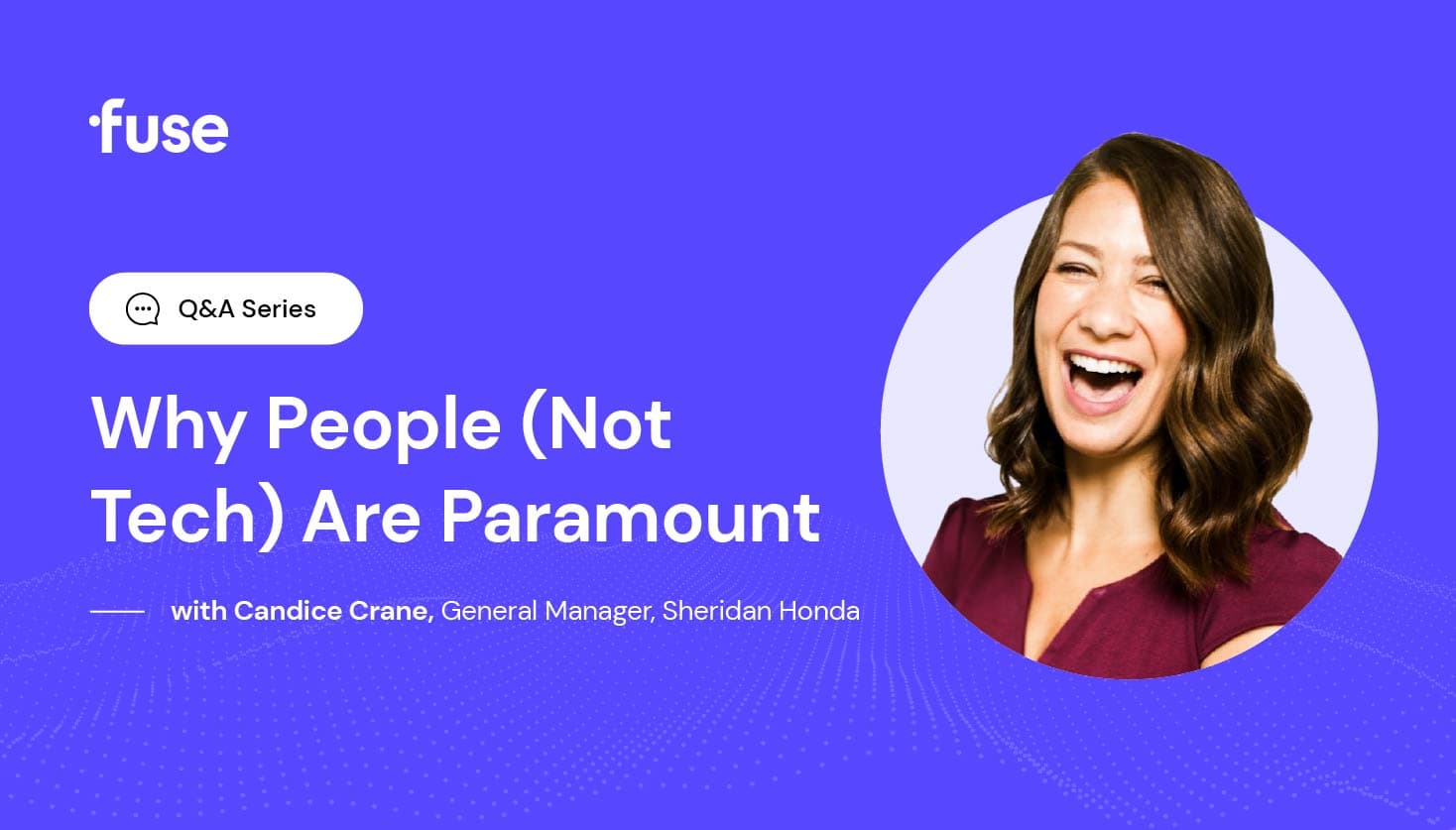
By: Fuse
14 minute read
In our fast-paced digital world, it can be easy for tech companies to forget why they innovate. Candice Crane is here to remind us of the truth.
As she aptly puts it, “Technology is always in service of the dealer and customer. Tech is transformative, but people are paramount.”
An experienced retail automotive expert, Candice is the general manager of Sheridan Honda in Wyoming. More importantly, she’s a connoisseur of “people strategy,” or the corporate philosophy that enables dealers to empower employees and coalesce as a united front.
Candice is a longtime friend of Fuse, and we were lucky to catch up with her over the summer. In our wide-ranging interview, Candice reveals how dealers can develop a robust people strategy, how they can define “what ‘good’ looks like” for their bottom lines, and why confident leadership is vital to effecting truly progressive change.
Thanks for catching up with us today.
My pleasure!
Let’s start with people strategy — a big talking point these days. How do you advise modern dealers to transform their people strategy alongside their technology strategy?
There are several tenets of people strategy that I believe in.
For starters, you have to identify the areas where you can actively empower your people more effectively.
Within the industry, we talk a lot about reducing the number of people involved in a given transaction. As all dealers know, that’s pretty hard to do if you haven’t first figured out how to empower your frontline employees.
Whether it’s the person that answers the phone or greets the customer at the door, the first point of contact plays a vitally important role on the road to the sale.
Those employees have to be empowered to not only understand the customer’s questions, but to confidently affirm them, and then guide them throughout the rest of their journey.
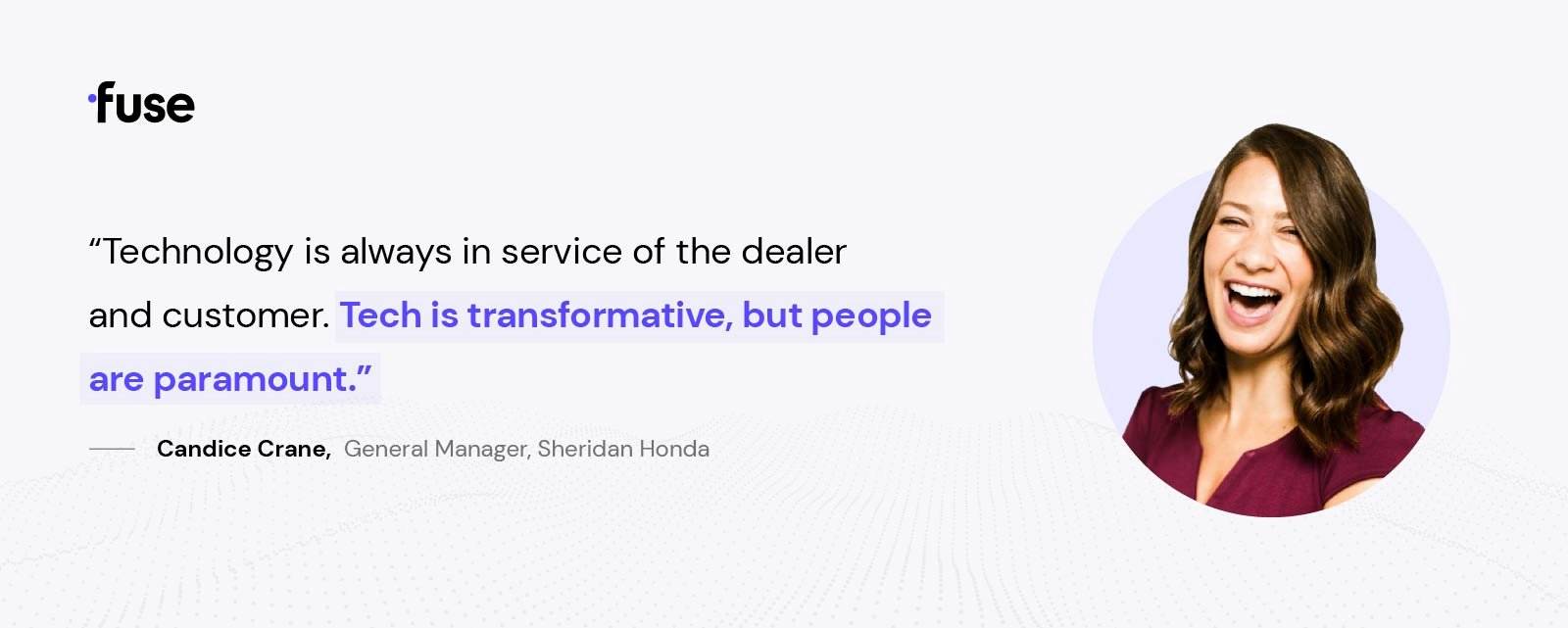
How can dealers get specific enough to focus on one employee?
If dealers truly want to create a better process, they need to streamline. They need to unite their disparate silos into one cohesive hub.
That process encompasses the second tenet of people strategy: enhancing role design and organizational structure.
In other words, if you’re going to successfully empower your employees, you need to examine the core functionality of each individual role. You need to look at how those roles were initially conceived, and if you intend to revise them, you need to set new standards and precise expectations for the future.
For example, let’s say you’re going to convert to a one-person selling model.
Traditionally, most dealers have a salesperson, a sales manager, and a finance manager, right? Well, with a one-person selling model, you’ll be combining those roles into one evolved position.
That process of redefining should also happen throughout the organizational structure at large.
Such changes will naturally lead to a change in compensation, and ultimately, the measurements for success are going to shift as well.
That’s where the questions come into play: “What does ‘good’ look like? And do we still care about the number of appointments?”
Personally, I don’t think measuring based on appointments holds much currency these days.
I care more about the number and quality of engagements — meeting customers where they are and getting them across the finish line.
Related Read - Single Point of Contact: 5 Benefits of SPOC for Dealerships
If a dealer embraces this sort of people strategy, of prioritizing engagements over appointments, where should they start?
I would encourage dealers to start with the friction.
I would ask dealers to ask themselves, “What’s working? What’s not working?”
Then, I would have them include their employees in the conversation: “What’s preventing you from having the experience you want to have?”
Here’s the great news: your employees will tell you the truth.
All you have to do is listen. If you enter that dialogue with an open mind, you’ll start to understand how your store can evolve in a meaningful and effective way.
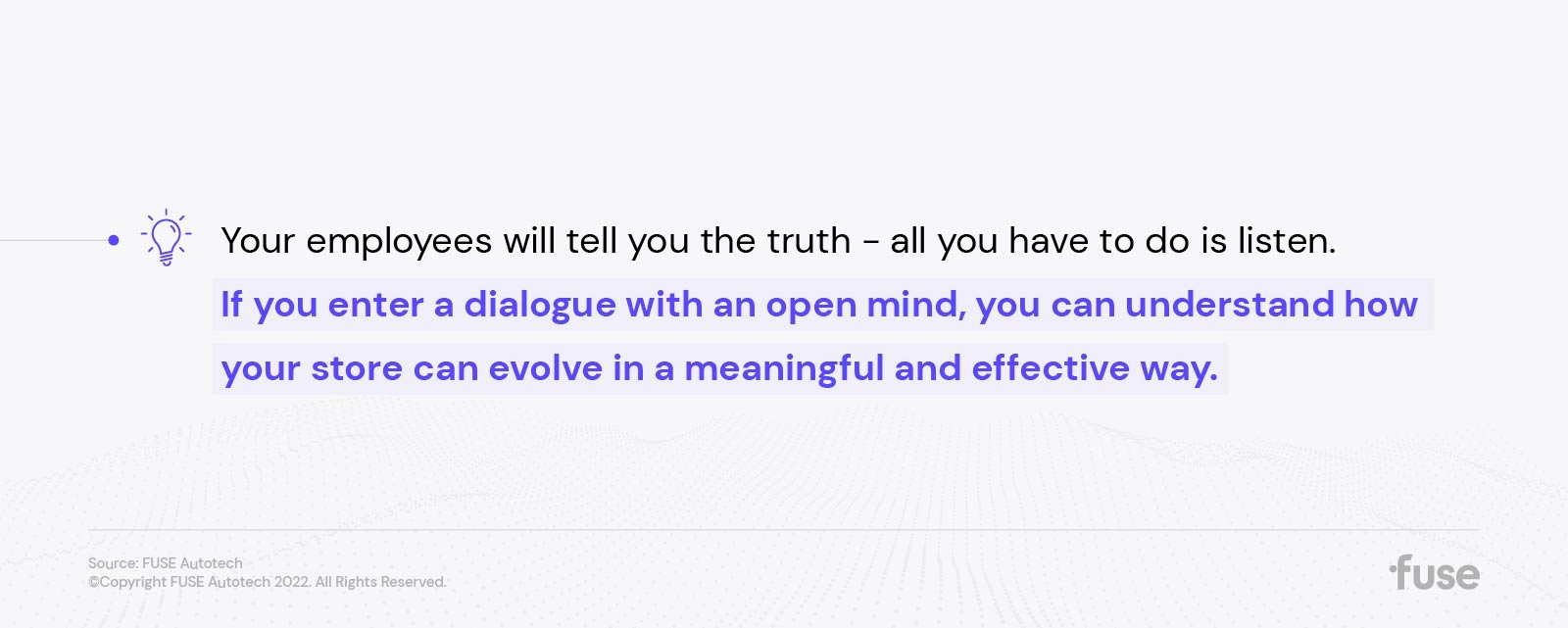
In your experience, what internal barriers do dealers typically encounter?
Throughout my days of consulting, I found that most barriers are very institutional.
Sometimes it’s as simple as a sales manager wanting to maintain autonomy. They want to be involved with every single design component of a transaction, because that’s what makes them feel valuable.
When their sense of value is threatened, a dangerous line of thinking occurs.
For example, if they don’t feel valuable, they question their ability to make money. Then, once they question their ability to produce, they start thinking, “I can’t work here anymore.”
This blend of desperation and resentment triggers their refusal to adapt: “We’re not changing.” And I get it, there’s an intensely emotional connection to holding onto the past.
Evolving can be painful.
As a new general manager, I’m constantly in the throes of designing our tech stack. I’m a big believer in modern tech, and I’ve been relentlessly speaking about the importance of automation.
But even when you’re in the hot seat making the decisions, it can be really hard.
If you’re not fully committed and totally intentional, or if you let the vendors dictate what’s right for you, you’re not going to have the kind of automation you want and need.
Then, you end up engineering a process around your limitations — rather than your potential — and it results in a net loss for both the business and the customer.
How should dealers approach their more defensive employees?
Well, you need to start with a really clear vision. And you need to get buy-in into that vision.
In order to get there, you need to be fully transparent with employees and admit to what’s not working.
You need to be honest and say something like, “Hey, I get it, you don’t like this long process. Our customers don’t like it. I don’t like it. You have a compensation plan that’s highly volatile, and that can’t feel good all the time. I hear you.”
When you can be transparent about what’s not working, you’ll earn the opportunity to share your vision for the future and then place your team in the heart of it. Let them know they’re an essential part of the solution.
Resistance to change is natural, and it can be uncomfortable.
But that’s why leaders need to be very clear on the vision they’re trying to create and how they’re going to execute it.
Employees need to understand how the proposed changes will enhance the things they value most, like their quality of life, their number of hours, their level of stress, and above all, their salary.
Related Read - Cultures Are Grown Not Bought
Speaking of money, let’s talk about compensation design. What are some of the key changes you make to compensation design when you’re going through a business model transformation?
The biggest change is to start with the end in mind.
In other words, dealers should build top-down versus bottom-up, which is how most people in our industry like to work.
As you know, dealers are notorious for their bottom-up approach, where the lowest level employees get paid practically nothing and then earn based on their contributions. That methodology extends all the way up throughout the corporate structure.
The bottom-up approach is rife with infighting and unhealthy competition. And it makes sense, because employees aren’t rewarded for working together, and they have no shared goal to pursue.
We see this misalignment with sales reps all the time, where some are comfortable selling 10 cars a month and earning $50,000 for the year, while others aim for 15 cars a month to earn $75,000.
Frankly, some sales reps are happy making even less. They simply enjoy going into work, spending time with their coworkers, and selling a few cars along the way.
Of course, others are highly ambitious and have little to no interest in their quality of life. These are the rare sales reps who shoot for $200,000 a year and inevitably cause chaos along the way.
Ultimately, there’s no common goal or shared incentive.
Sure, our sales managers or service managers get a percent of the overall department gross. But what are they actually chasing? What are they aiming for as a team, as an organization?
To go back to my earlier question, “what does ‘good’ look like?” Most traditional compensation plans won’t answer that question.
Dealers have to start with the end in mind. They have to zoom out and determine their net goal annually, then set their net goal quarterly, then monthly and so on.
From there, they can reverse engineer the numbers and figure out how to reach that net goal based on service dollars, part revenue, sales gross, volume, unit, etc.
That’s how dealers can confidently set and achieve goals. That’s how you get everyone in the boat rowing in the same direction, at the same speed, and with a similar level of enthusiasm.
Related Read - Solved: How to Build Sustainable Dealer Profitability
You mentioned the more ambitious salespeople, the “hunters”, as they’re often referred to as. How do you incorporate those high performers into a comp system and a team environment like you’ve been discussing?
Listen, competitive people are going to win no matter what.
Whether or not they choose to collaborate, they’re going to hit their targets, and you’re not going to stop them.
If I hire really competitive, driven people, I would be a fool to not build a compensation model that allows them to cross the finish line together.
Now, that doesn’t mean everybody has to make the same amount of money.
I might say, “Top performers equal $150,000 a year. To earn that money, you have to produce either X amount of gross, Y amount of units, or a combination of both,” whatever your targets may be.
In my opinion, it should be a combination of both, not just one or the other. Otherwise, we’re just gaming the system.
If it’s a combination of both, dealers can say, “Alright, if $150,000 is the target, how much of that do I want to guarantee in order to attract the right type of people?”
You can then subtract that guarantee from the total amount you’re paying, and there’s your variable pay.
Then you can decide how you want to reward variable pay and set the appropriate targets.
Obviously, location matters, and $150,000 a year looks pretty different in Sheridan, Wyoming than it does New York City. And that’s okay.
The targets can be different, because they’re rolled up into the larger number of net profitability.
Again, when you start with the end in mind, pay plans become clear across the board.
Let’s switch gears for a second and ask you to reflect on your career. We’ve known each other for 10 years, haven’t we?
Longer than that!
Really?
We met in 2007, didn’t we?
Wow. Well, when we started working together at Walser Automotive Group, you brought this really innovative people strategy to the team. What have you learned since then?
For one thing, the commitment to change that Paul and Andrew Walser exhibited was extremely rare.
Honestly, I was too young to understand how most leaders won’t commit to that level of disruption.
At the time, we were trying to solve a recruiting problem — not a customer experience problem, or a profitability problem.
Once we identified the issues, we were able to re-engineer roles in the organizational structure, to implement a more effective training program, and to convert to a one-person selling model.
Those shifts reduced expenses, increased net profitability, and allowed the company to fulfill its true potential.
All of those amazing results were a product of Walser leadership committing to significant change, evangelizing to employees, and seeing it through from beginning to end.
As a consultant, I’ve worked with a lot of dealerships over the years. While I’m proud to have made an impact on each of those stores, I can honestly say the results with Walser were exceptional.
Related Read - How Walser Toyota Landed the #1 Spot for Passenger Car Sales in 2022 Using Automated Financing
Is executive sponsorship the most important component of effecting change?
Without a doubt. Leadership has the largest influence on the success or failure of business transformation. It starts at the top.
I’ve seen owners empower their general managers to execute their visions, and they almost always get diluted. The general manager will inevitably have questions and concerns, and then they’ll get stuck with employees questioning the owner’s vision and ultimately undercutting its viability.
The owner has to have supreme confidence in their vision, and more importantly, they have to be selling it and reinforcing it at every checkpoint.
Is it exhausting? Yes. Is it frustrating and nerve-racking at times? You bet.
But if you truly believe in where you’re going, then you just have to commit to it and refuse to be distracted by naysayers, doubters, and unsustainable market conditions.
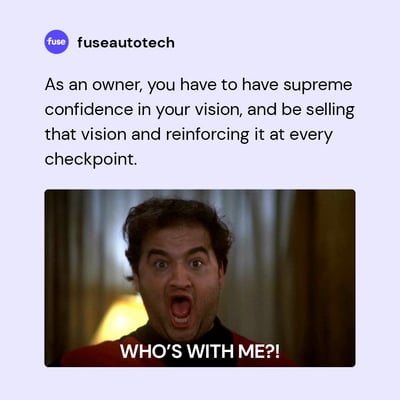
Do you find that many owners are easily distracted from executing their visions?
Unfortunately, yes.
Sometimes, dealers will have unbelievable grosses and look at their bottom line thinking, “You know, I don’t really need to do these changes right now. Business is great.”
I saw this pre-COVID, where there was incredible enthusiasm surrounding digital retailing and the attempts to create a better customer experience.
There were authentic conversations happening at conferences with dealers saying, “Yeah, we need to evolve. We need to do something different.”
They had gross erosion left and right, net profitability erosion, and some manufacturers whose average nets were negative — at least before the pandemic.
Throughout 2019 and early 2020, there were these honest dialogues promoting substantive change. Then COVID hit.
Immediately, we started seeing people gravitate towards automation and get really excited about it. And when it came to digital retailing, the early adopters were gaining leverage.
Then, the cycle of change repeated itself, as it always does. Our market conditions changed again and our supply and demand equation got thrown off.
And everyone looked at their bottom line and thought, “We’re solid. We can put these changes on hold, because we’re killing it right now.”
It’s such a shame. As an industry, we took our eye off the ball and traded long-term sustainability for short-term profitability.
From a process standpoint, things still aren’t great. From a customer relations standpoint, they’re not much better.
if we’re taking advantage of customers now — which many dealers undoubtedly are — they’re going to remember that when the market stabilizes.
And many dealers will be in for a world of hurt.
Related Read - Grabbing Market Share During a Market Disruption
How did the pandemic affect dealer hiring strategies?
COVID certainly eliminated the headcount at stores.
Fortunately, many dealers were very strategic with who they brought back, and they made an effort to empower those people and give them more responsibility.
That’s a huge positive, with regards to people strategy components.
Plus, many dealers were making a ton of money, so the work environment was quite positive.
I just hope we can continue that level of excitement as the market stabilizes. And while automation, true change management, and process reengineering have been put on hold, I think the enthusiasm might reopen those pre-COVID conversations.
How can dealership owners and general managers embrace training and promote a culture of learning?
As operators, the easiest thing we can do is identify the repetition that’s required to be successful.
It’s vital to identify those key tasks — whether they’re done on the phone, in person, or on the systems.
When I say identify, I mean literally calling them out, writing them down, and then empowering employees to self-direct that training.
Self-direction is the answer to an industry-wide lack of training.
As operators, we get bogged down with a billion tasks a day, despite our best intentions. So instead of putting the pressure on ourselves to train, I would encourage a dealer to create a training program that promotes self-direction.
For example, you might have a new salesperson shadow you for three days of uninterrupted time. Beyond that, you could provide a workbook that requires fifteen greets over the phone and twenty emails, whatever you recommend.
Does repetition play a big role in self-direction?
Absolutely. That’s why we see it throughout the military, athletics, and the arts.
Repetition is training.
But dealers shouldn’t feel like they have to create a mini university and reinvent the educational wheel. They also shouldn’t feel like they have to hire a costly, full-time trainer.
Here’s what I know: tasks generally lead to success.
If self-direction leads to empowerment, then I’m going to allow my salespeople to self-direct and give them the best opportunity to succeed.
Beyond that, dealers need to do two things: have someone check that new recruits did the work, and then facilitate a conversation about it at the end of the day.
Ask them what they learned and where they might need additional clarity.
That’s how you make training and learning part of the daily culture.
Want to learn more? Request a demo now to discover how Fuse can help your dealership implement an industry-leading customer experience.

As a car dealer, you know it’s important to keep your customers happy. But what happens when complacency kicks in? The short answer: you’ll start to lose customers to your competitors. After all, the...
News and Insights
9 min read
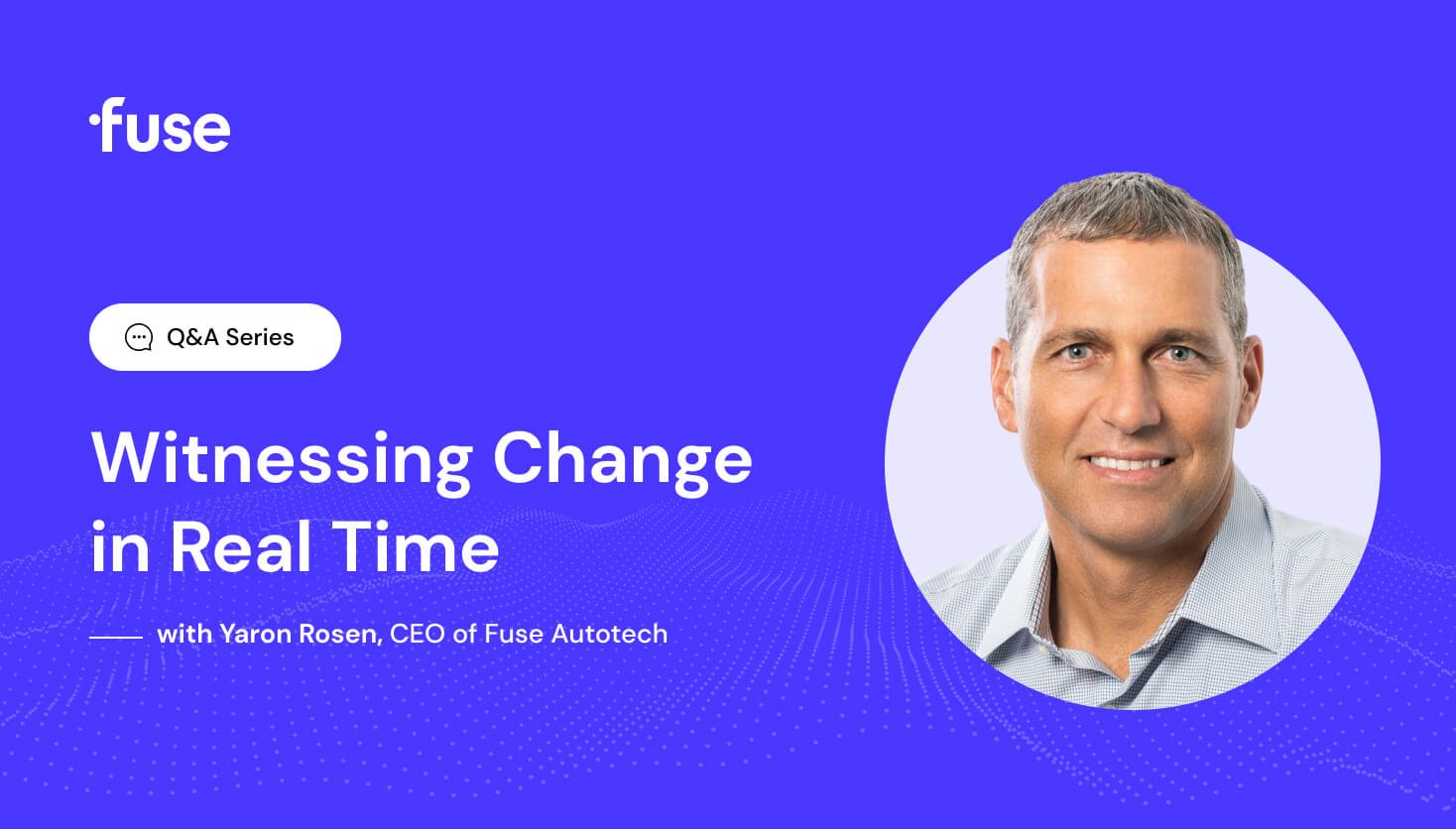
Interesting lives are undeniable — and Yaron Rosen has led a fascinating life. As CEO of Fuse, Yaron brings a wealth of personal and professional experience to the cutting edge of autotech. He has...
News and Insights
11 min read